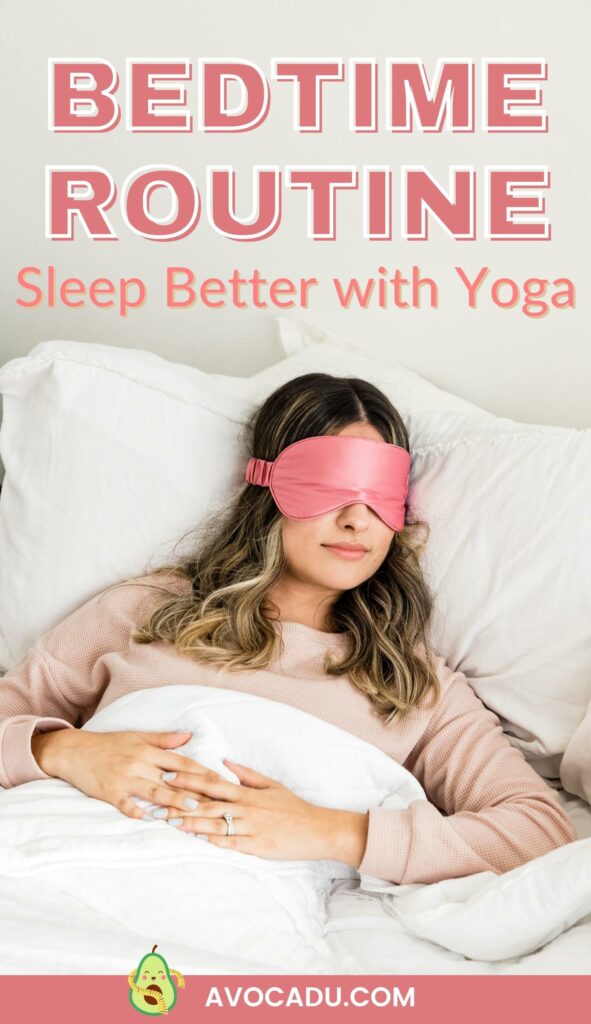Yoga for Better Sleep: Poses and Techniques to Improve Your Sleep Quality
We all know how elusive a good night’s sleep can sometimes be, don’t we? When counting sheep isn’t cutting it, you might want to try a different approach – yoga.
You’re about to discover the wonderful world of yoga and its powerful impact on sleep quality. Grab your mat and prepare yourself for a transformative experience.
We’ll explore techniques and poses that will guide you towards more peaceful and rejuvenating nights.
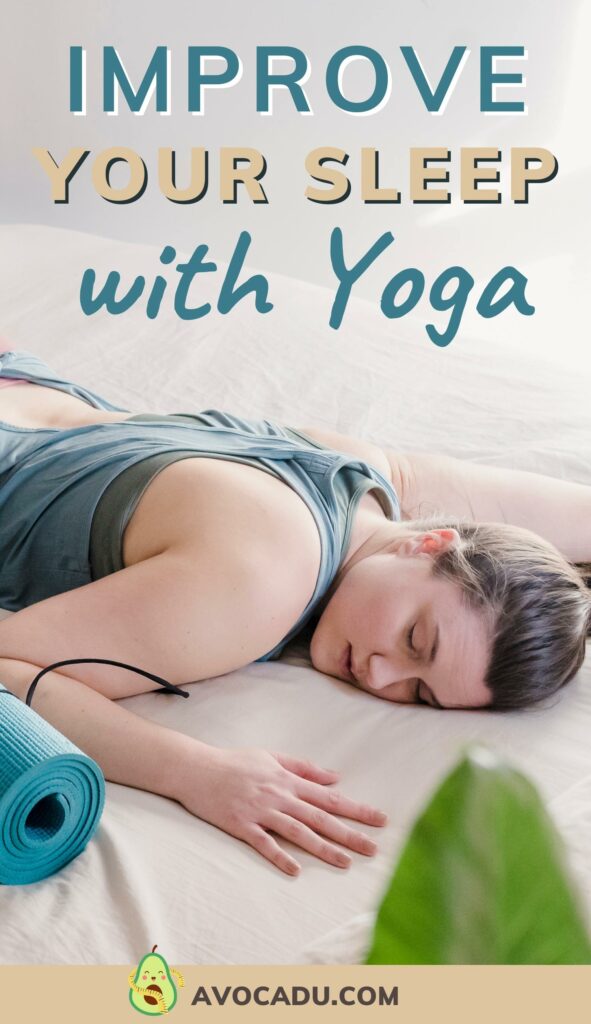
This post may contain affiliate links, which helps keep this content free. Please read our disclosure for more info.
Understanding the Science of Sleep and Yoga
You’ve probably heard about the body’s natural cycle known as the circadian rhythm. This internal body clock guides us when to be awake and when to dive into sleep mode.
But we all know how life’s daily stresses and strains can throw this rhythm off balance.
Maybe you’ve experienced those nights where anxiety keeps you tossing and turning, or physical discomfort disturbs your slumber. That’s your disrupted circadian rhythm in action, stealing your well-deserved sleep.
Here’s where yoga shines. Yoga is more than just striking poses on a mat—it’s a holistic practice that nurtures your body, calms your mind, and soothes your spirit. This makes it a perfect ally for your pre-bedtime routine.
So, how does yoga work its sleep-enhancing magic? Well, when you practice yoga, it stimulates your parasympathetic nervous system—your body’s own ‘calm-down’ command center.
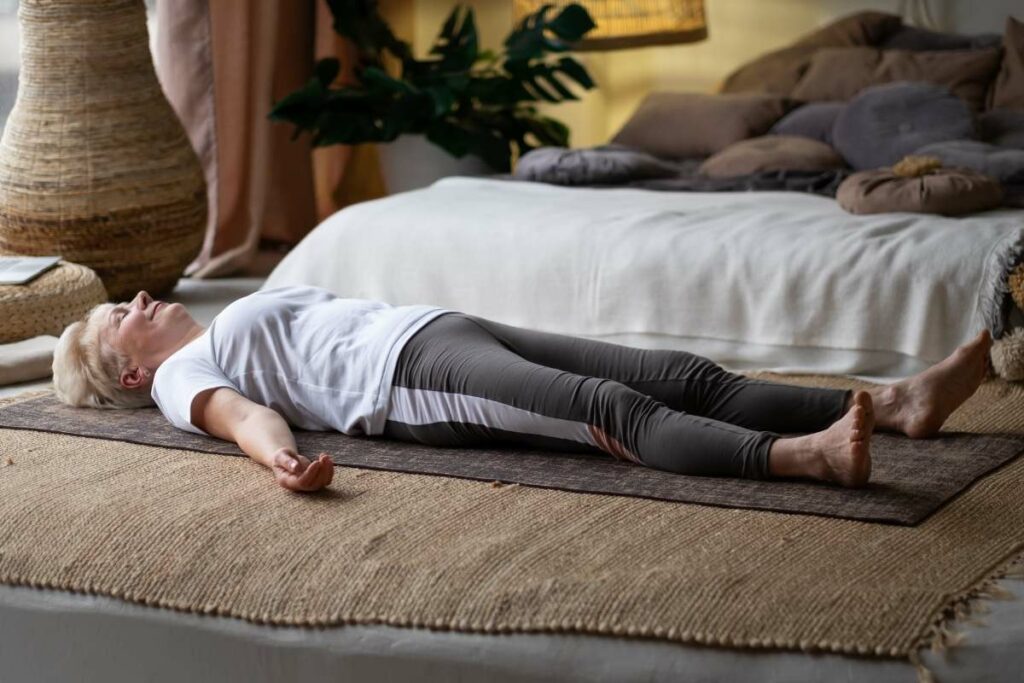
This helps to slow your heart rate, regulate your breathing, and shift your body into a state of relaxation and restoration.
What’s more, yoga helps to keep your stress hormones, like cortisol, in check. When these hormones are running high, it’s like a loud party in your body that keeps you from falling asleep.
By calming your mind and body, yoga turns down the volume on this party, making it easier for you to transition into sleep.
Also, let’s not forget about mindfulness—the art of being completely present and immersed in the moment, a key aspect of yoga. This can help quiet those racing thoughts that often keep us wide-eyed at night.
So you see, through its blend of physical poses, breathing exercises, and meditation, yoga can help realign your sleep patterns and improve your sleep quality.
The Benefits of Yoga for Sleep
If you’re battling with sleepless nights, yoga could be your secret weapon. Let’s talk about why. To begin with, yoga is an amazing stress-reliever.

Picture this: after a long, hectic day, you roll out your yoga mat. With each mindful movement and deep breath, you can feel the day’s stress and anxiety melting away, almost like exhaling out the tension.
And how about those nights when you can’t get comfortable because of a nagging backache or stiff neck? Yoga, with its gentle stretches and poses, can help alleviate those aches and pains. It’s like giving your body the soothing TLC it needs to unwind and prepare for sleep.
But yoga doesn’t stop at simply tackling the negatives—it actively promotes positives too. Through its unique techniques, yoga can trigger your body’s relaxation response. This is your body’s own chill-out mode, telling every cell it’s time to wind down and recharge.
Less stress, eased discomfort, and a deeply relaxed state—what does that spell? Better sleep! With yoga in your routine, you’re laying the groundwork for quality, restful sleep.
Best of all, this isn’t just friendly advice. There’s a mountain of scientific research out there verifying these benefits of yoga. It’s almost as if those ancient yogis knew exactly what they were doing!
Best Yoga Poses for Better Sleep
Excited to get started with yoga for better sleep? Fantastic! Here are some gentle yoga poses perfect for winding down your day:
Viparita Karani (Legs-Up-The-Wall Pose)
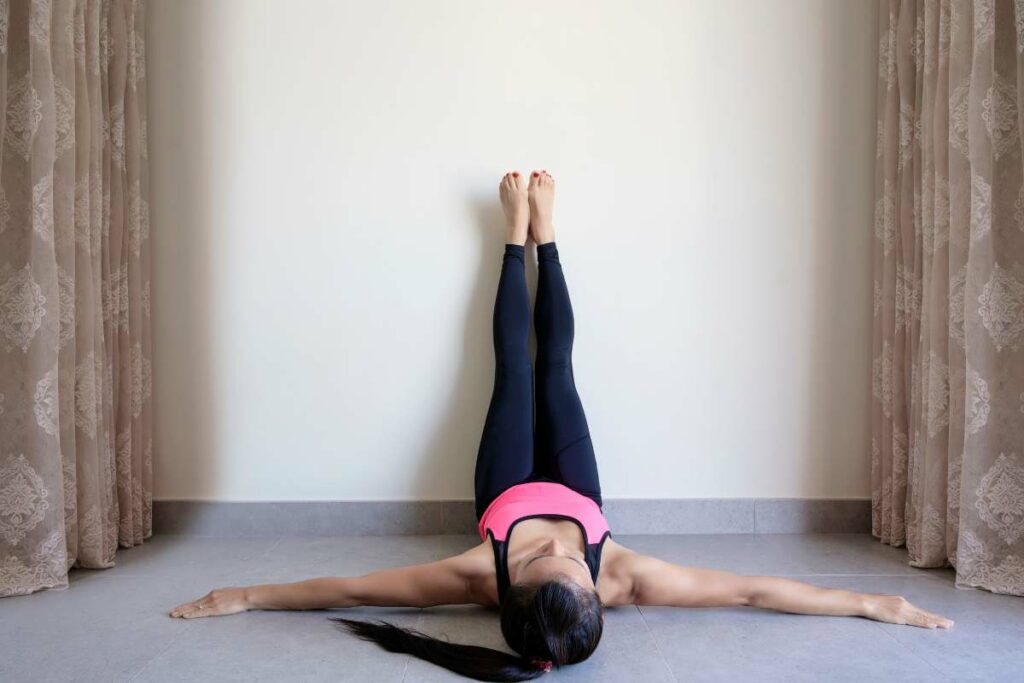
For this pose, you’ll be lying down with your legs resting against a wall. It’s a wonderfully restful pose that helps to relax both your body and mind.
Uttanasana (Standing Forward Bend)
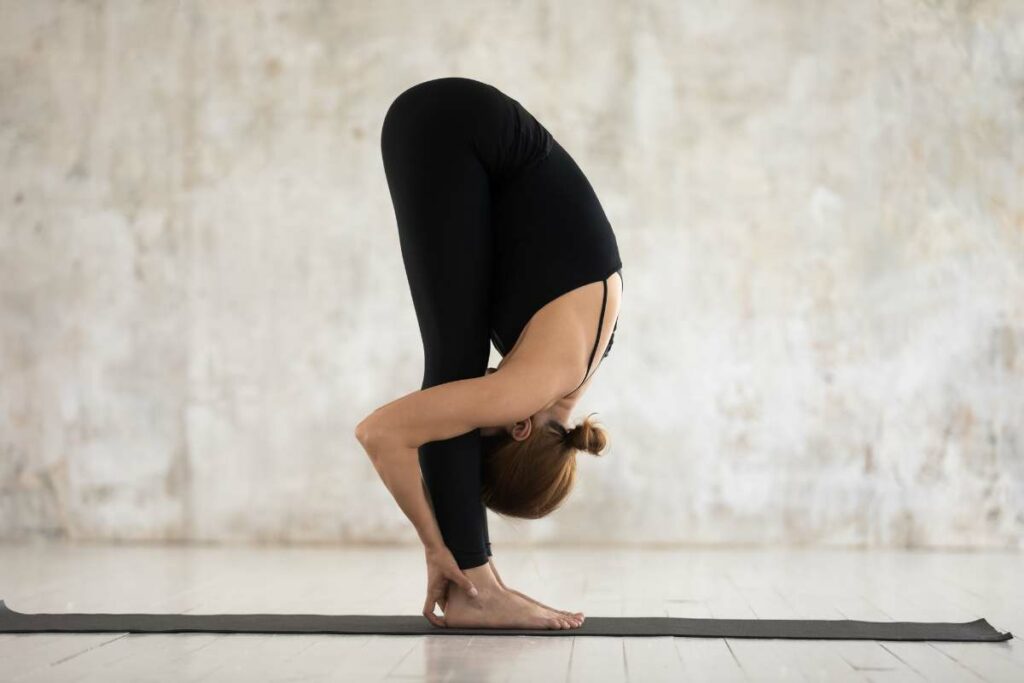
In Uttanasana, you’ll be folding your body forward from a standing position. It’s an excellent pose to wash away any mental tension, and it gives your back and legs a refreshing stretch.
Paschimottanasana (Seated Forward Bend)
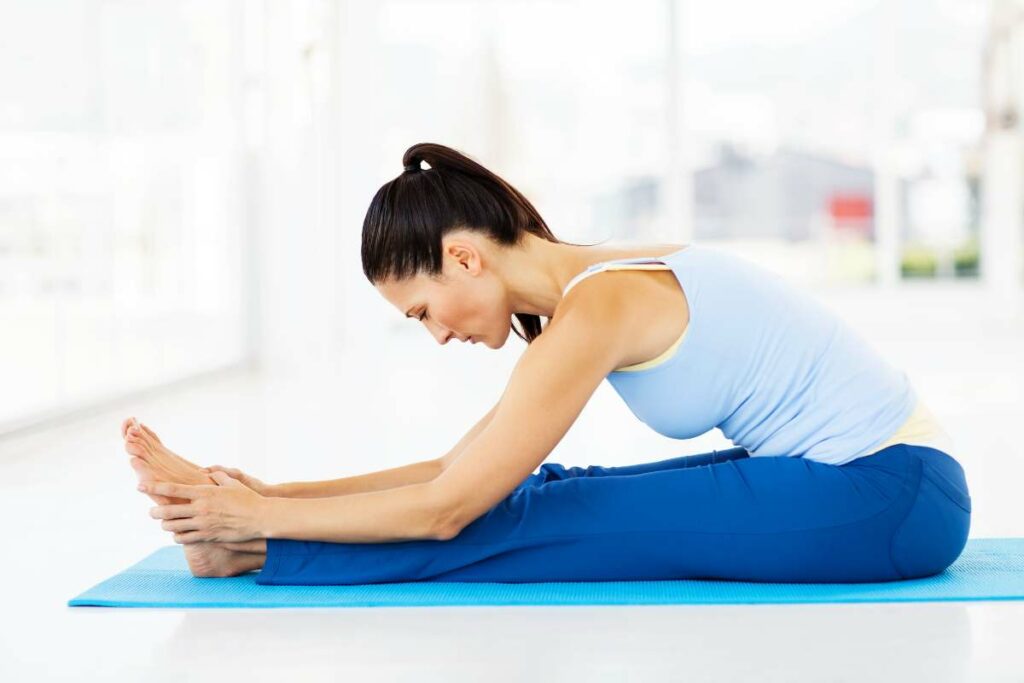
While sitting on the floor, you’ll be reaching forward towards your toes. Paschimottanasana is an effective pose for stretching your spine and melting away stress, as if enveloping your mind and body in a soothing embrace.
Balasana (Child’s Pose)
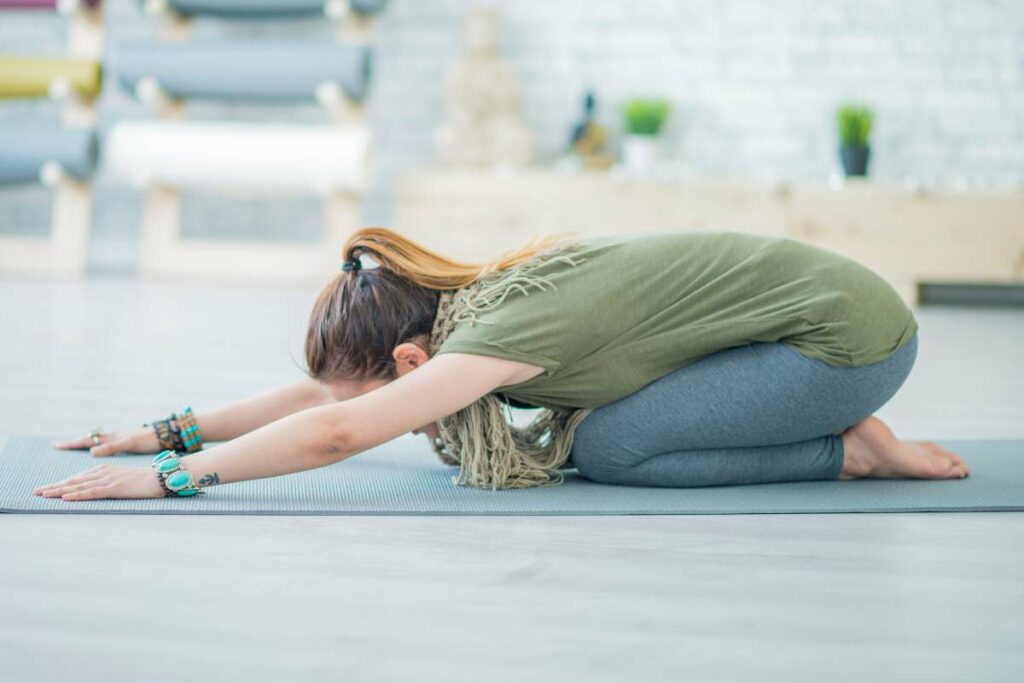
This pose invites you to curl up like a small child—knees drawn up, arms extended forward, and forehead resting on the ground. Balasana is your go-to pose for profound relaxation and stress relief.
Savasana (Corpse Pose)

Arguably the best pose for relaxation, Savasana has you lying flat on your back, palms facing up, allowing your body to completely relax. It’s akin to a dry run for sleep, preparing your body for a restful night.
Keep in mind, yoga is a personal practice, not a contest. It’s not about the perfection of the pose, but about tuning in to your body and honoring what it needs.
So, release any self-judgment, focus on your breath, and allow your body to ease into each pose. Before you know it, these mindful moments will be paving the way to better sleep!
Incorporating Breathing Techniques and Meditation
Now that we’ve gone through some poses, let’s take a step further and explore two powerful allies on your yoga journey to better sleep: breathing techniques and meditation.
First off, let’s chat about Pranayama—yoga’s unique set of breathing techniques. The term ‘Pranayama’ originates from two Sanskrit words: ‘Prana,’ meaning life force, and ‘Yama,’ meaning control.
It’s essentially about harnessing and channeling your life force through breath control.
One simple yet effective Pranayama technique is Anulom Vilom (Alternate Nostril Breathing).
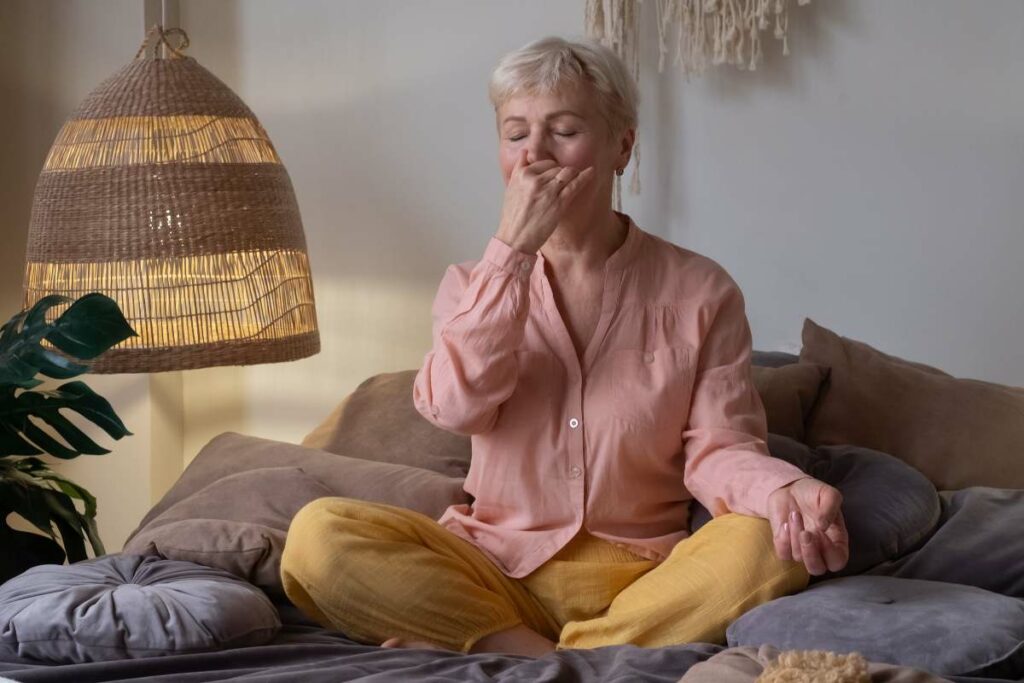
To do this, you close one nostril while inhaling through the other, then switch and exhale. This alternating pattern helps to balance the mind, release tension, and prepare the body for restful sleep.
Another technique to try is Bhramari Pranayama (Bee Breathing).

In this technique, you cover your ears with your thumbs, place your index fingers above your eyebrows, and make a humming sound while exhaling. It’s like creating your personal lullaby that soothes and calms your mind, getting you ready for a peaceful slumber.
But that’s not all. Meditation is another powerful practice for better sleep. It’s your personal mind masseuse that kneads away the knots of worry and stress from your day.
A simple mindfulness meditation practice before bed—focusing on your breath or scanning your body—can help still your mind, dialing down the mental noise that often keeps us tossing and turning.
With these techniques in your toolkit, you’ll be well-equipped to create a peaceful environment conducive to deep, restorative sleep. Just remember: consistency is key.
Make these practices part of your nightly routine, and you’ll likely see improvements in your sleep over time.
Designing Your Pre-Sleep Yoga Routine
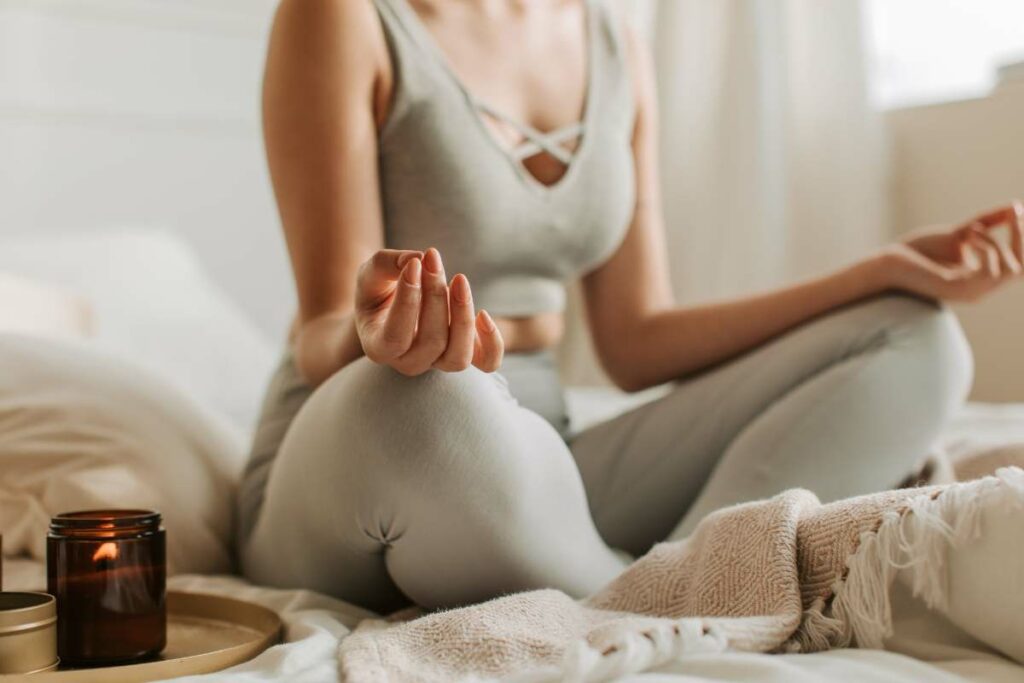
You’re now equipped with effective yoga poses and soothing breathing techniques. The next step is stitching these elements together into a tailored pre-sleep yoga routine—a nightly ritual aimed at guiding your body and mind into a state of calm readiness for sleep.
Ideally, this routine should be performed as a transition into your bedtime, acting like a silent, comforting whisper to your body, signaling the shift from day to night.
Start by crafting a serene ambiance. Dim the lights or opt for the soft glow of candles, creating a sanctuary that feels tranquil and cozy. If you find music to be relaxing, feel free to include some gentle, calming melodies in the background.
Time to unroll your yoga mat and engage with the poses we’ve discussed. Move from one pose to another at a leisurely pace, allowing your body to gradually relax into each posture. The goal isn’t about rushing through but fully experiencing each moment of tranquility.
After your series of poses, shift your focus to your breath. Engage in a few minutes of Anulom Vilom or Bhramari Pranayama, allowing these techniques to further soothe your mind and body.
Finally, cap off your routine with a brief meditation session. Settle into a comfortable sitting position, close your eyes, and either focus on your breath or do a body scan. As you exhale, visualize yourself letting go of the day’s concerns, making room for a restful night’s sleep.
Practice this routine consistently, treating it as an act of self-care, a nightly retreat for your wellbeing that paves the way for better sleep.
Embracing Yoga for Restful Slumbers and More
In wrapping up, you now have a treasure chest of knowledge on how a simple yoga routine can pave the way to improve sleep quality.
But the benefits of yoga don’t stop at better sleep—it’s an investment in your overall well-being, offering a path to increased flexibility, relief from aches, and a more toned physique.
If you’re ready to take another step on your yoga journey, consider exploring the Yoga Fat Loss Bible. It’s an incredible resource that combines the calming benefits of yoga with a focus on weight loss.

As you stretch, relax, and breathe your way to better sleep, this guide can help you simultaneously work towards other health goals.
Click here to learn more about the Yoga Fat Loss Bible!
So, are you ready to roll out your yoga mat tonight? There’s an exciting journey ahead, full of potential for sweet dreams, restful nights, and a healthier, happier you.
